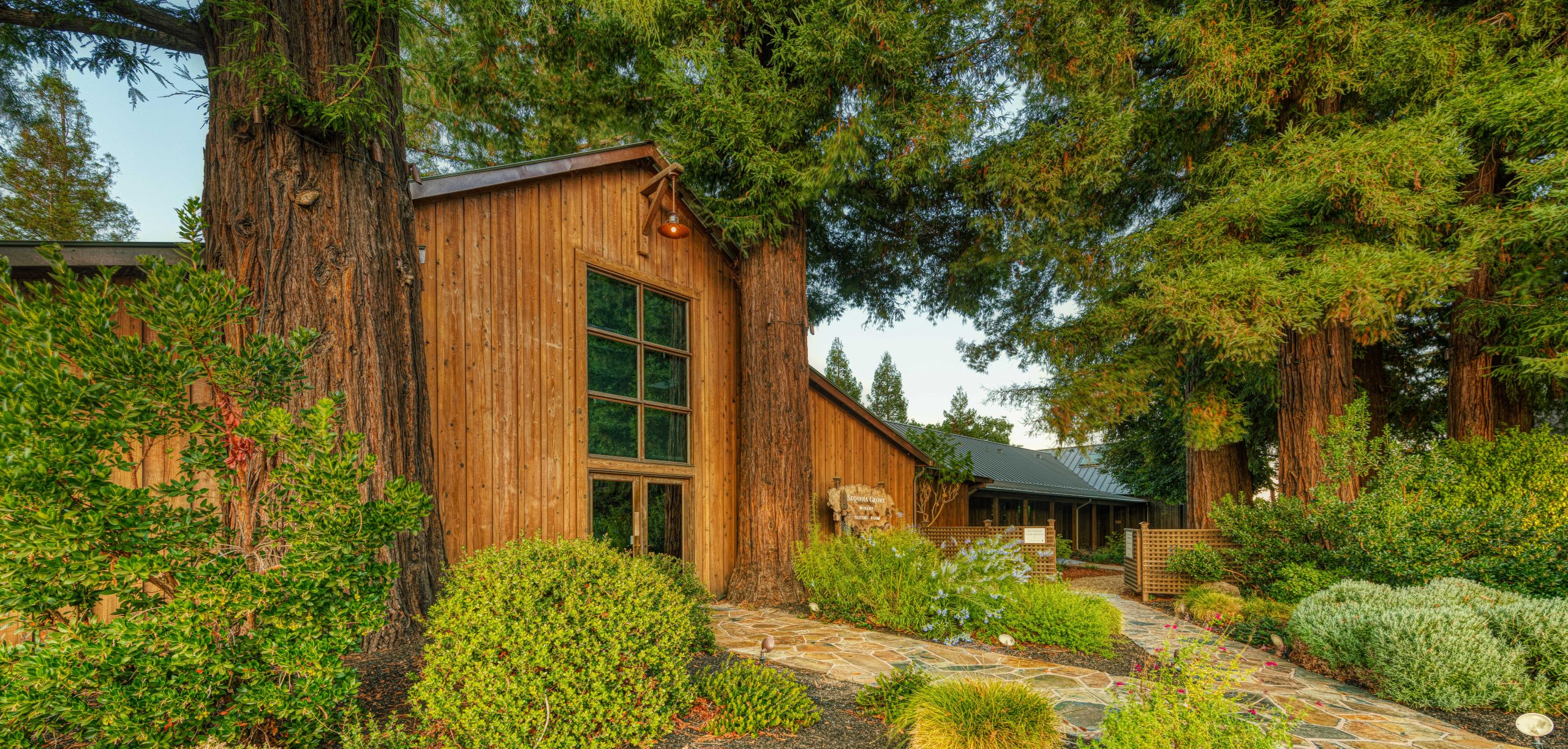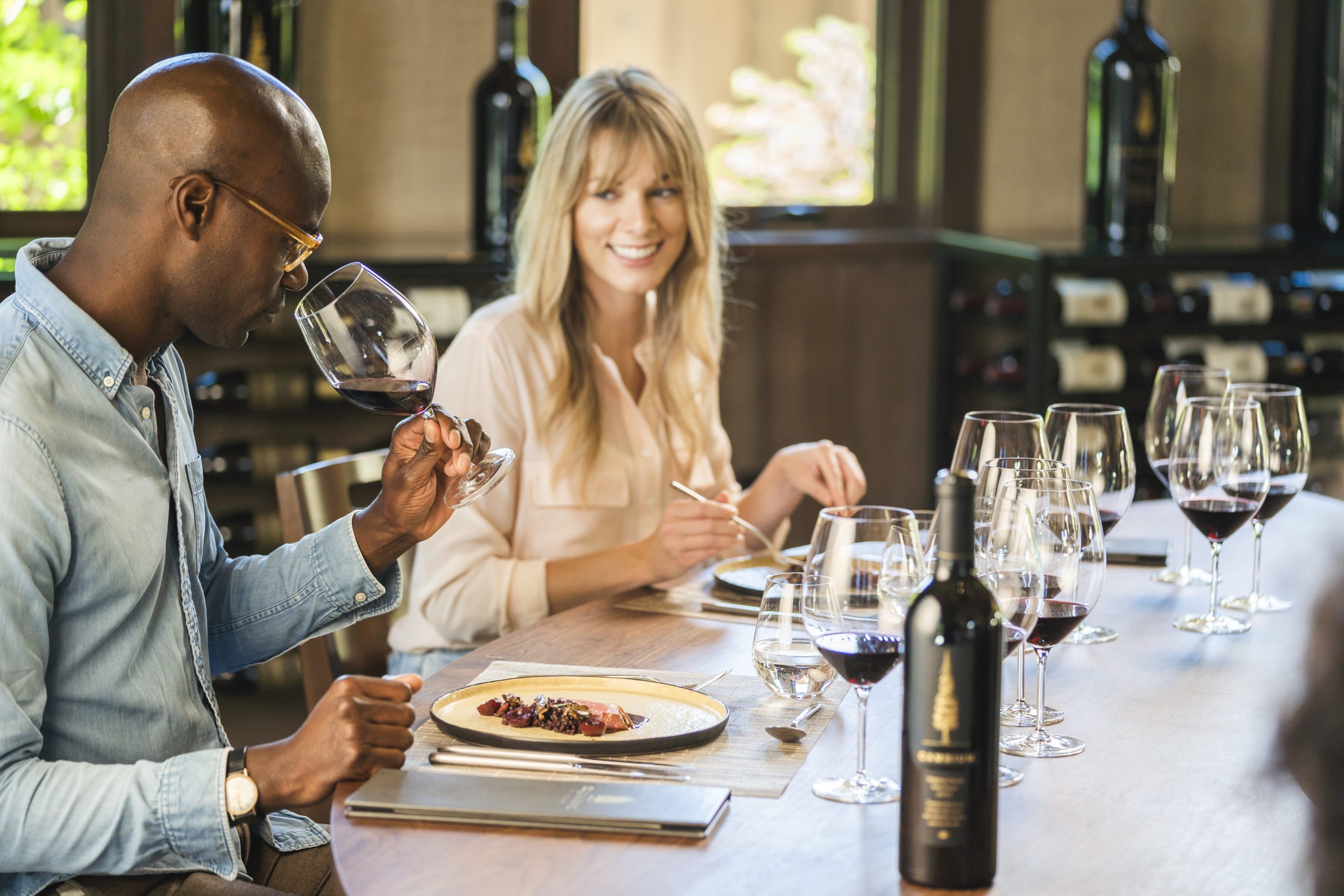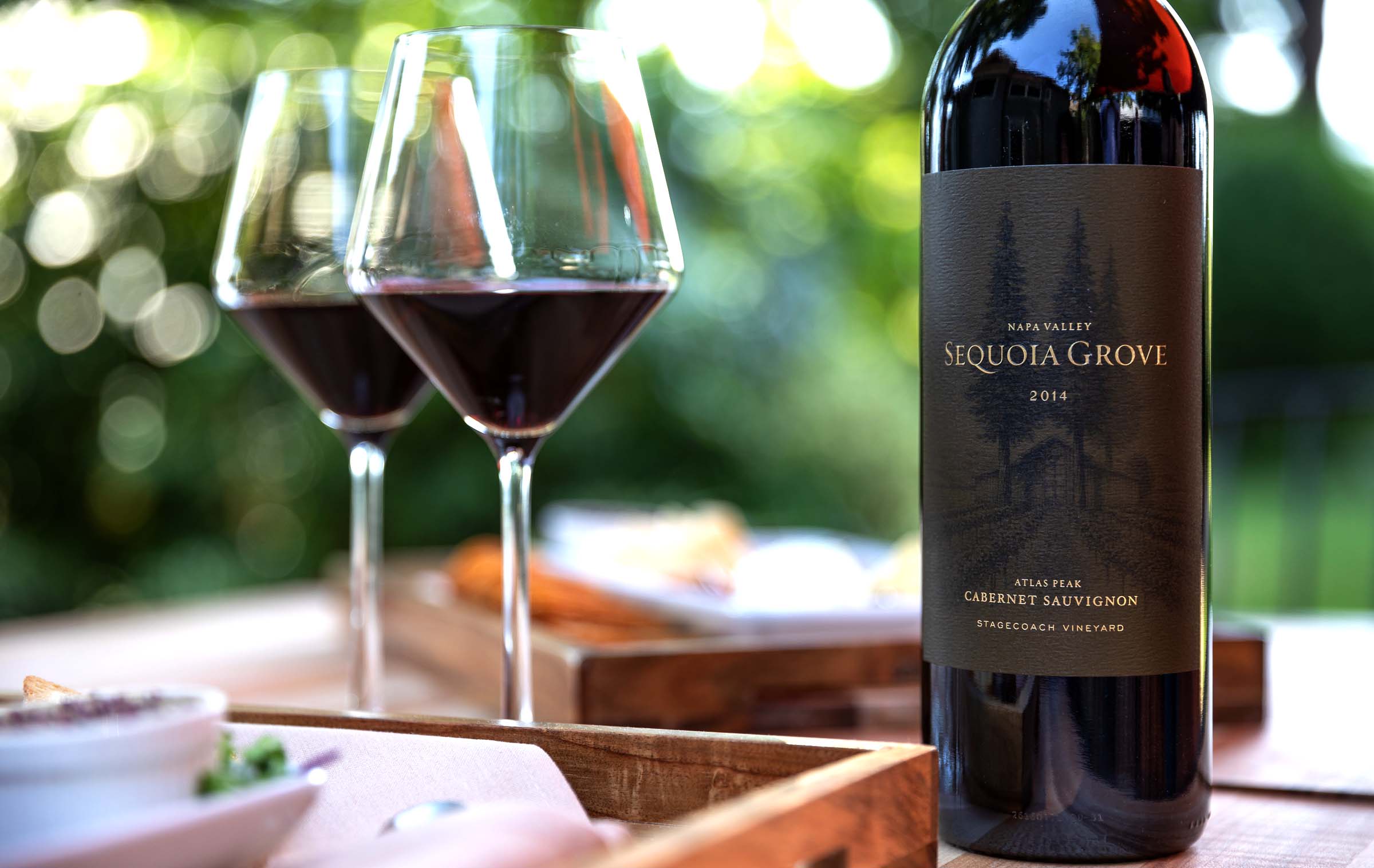Wine experts say that the best wines in the world are a reflection of where they are grown. Rutherford has the most ideal climate, soils, and location to craft world-class Cabernet Sauvignon. This is why Sequoia Grove offers four focused wine tiers, centered around Cabernet:
– The Napa Valley Series
– The Winemaker Series
– The Vineyard Series
– Cambium Flagship
“Think of the tiers as four V’s — Valley, Varietal, Vineyard and Vintage” says Steve. The Napa Valley Series is a great place to start:
“The series only consists of two wines: a Napa Valley Chardonnay and Napa Valley Cabernet Sauvignon. The tier is distributed nationally and offers an introduction to the world of Sequoia Grove. These wines are food-friendly and over-deliver on quality. If you see this in a restaurant or wine shop, buy it! From the first sip, you’ll understand that this is something special.”
The remaining ranges are only available at the winery or via the online store and wine club. The Winemaker Series focuses primarily on single varietal wines and a Rutherford Reserve Cabernet Sauvignon that uses these varietals as components in the blend.
“Whether you are in the mood for a Syrah, Cabernet Franc, Malbec, or Merlot, this range emphasizes the art and talent of the winemaker. The focus is on expressing varietal characteristics,” explains Steve.
The Vineyard Series is designed to showcase the terroir of notable vineyards across Napa Valley. When a vineyard name is on the label, 95% of the fruit must come from that vineyard alone. This is perfect if you want to explore how the nuances of a given vineyard site influences the aromas and flavors found in the wine. The tier includes one Cabernet Franc from the Tonella Estate and one Chardonnay. The rest of the wines are all Cabernet Sauvignons from single vineyards such as Tonella, Stagecoach, Morisoli, Henry Brothers, Christian, and Lamoreaux.
“It’s fun to taste how the location actually changes and influences the flavor of each wine,” states Steve. “These wines are also the focus of our award-winning Wine & Food pairing programs here at the winery.”
At the very top of our Cabernet Sauvignon craft is Cambium. This is our flagship Cabernet-based Bordeaux-style red blend. Each year, the Cambium blend is made from the best lots and best barrels in the cellar. Cambium can best be described as a portrait of the vintage in a very elegant frame.
“Cambium is a single wine! But that’s how we’ve separated our tiers. The Napa Valley Series focuses on the best of Napa Valley. The Winemaker Series focuses on the varietal. The Vineyard Series focuses on the vineyard. And the Cambium reflects the vintage. There are no barriers, and our winemaking team pushes themselves to the next level each year,” ends Steve.
From humble beginnings to a flourishing winery under the shade of the towering Sequoias, one thing will never change: Sequoia Grove’s dedication to quality. You are invited to come and experience the beauty of Napa Valley and delight in the perfect blend of wine, food, and friends.


